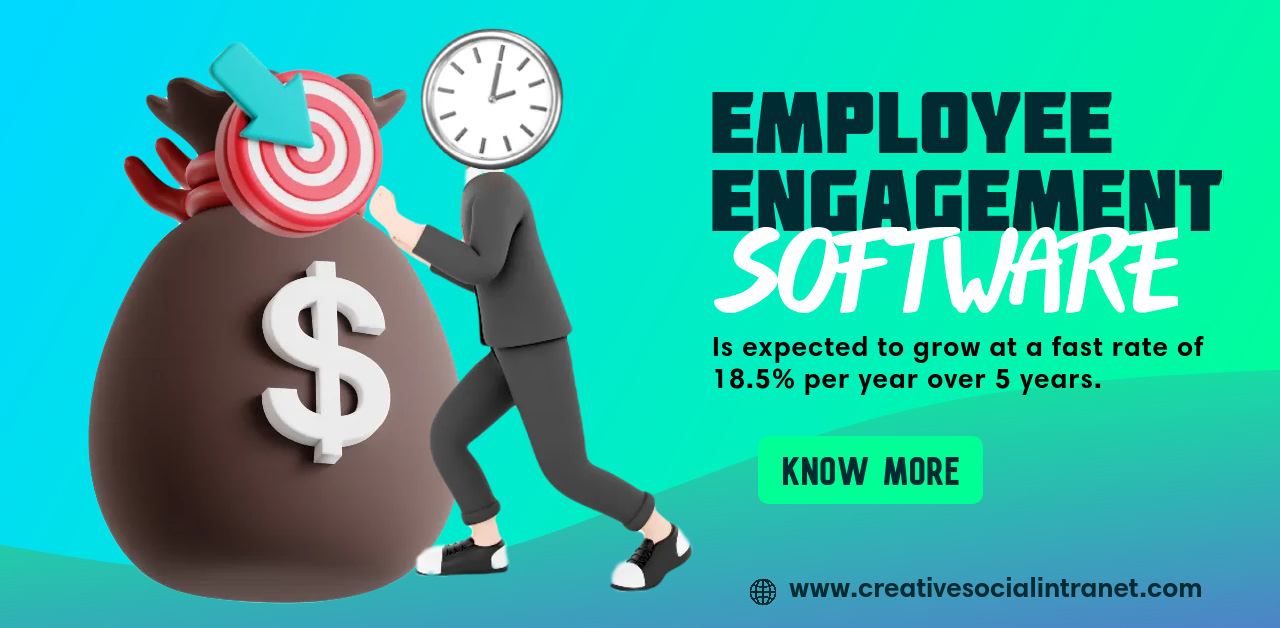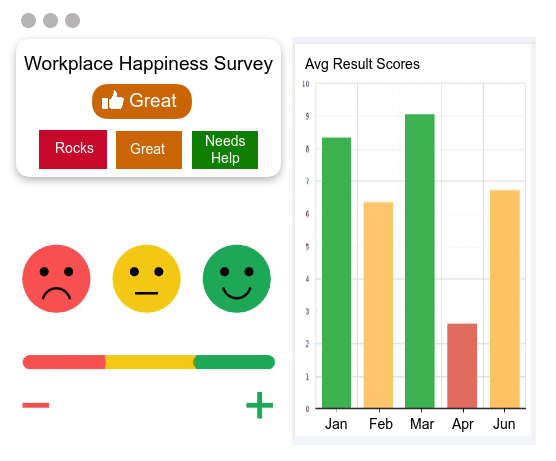
By 2029, the market for employee engagement software is expected to achieve unprecedented revenue levels.
The world market for employee engagement software is expected to grow at a fast rate of 18.5% per year over the next five years. The benefits of software that gets employees involved are what drove the market. This kind of software helps companies keep their employees, communicate better, be more productive, and provide better customer service. All of these things lead to more business growth and income.
Software demand is also going up in all fields because of high staff turnover and poor management communication. Businesses are quickly making more money, having more productive employees, and making happier customers because they use software.
Gamification is spreading around the world because it helps people learn and is more interested in working with businesses. According to Zippia, Inc., gamification made work a lot easier for 90% of workers. It is expected that integrating it will improve many human resource skills, such as making employees more productive, happier at work, and more. This will lead to a more effective incentive system and higher company income. In the same way, companies may encourage their workers to make friends and work together to speed up business processes. For example, Deloitte changed its hiring process in 2022 and used gamification to find new ways to get employees involved. This made a lot of strategies work better, like functional learning, virtual office trips, introducing business culture, and more.
In addition, businesses all over the world are using digital tools to make running their businesses and managing them better. These virtual workplaces connect to many tools that make working together easier, such as tools that keep employees interested in their jobs. As people learn more about work-life balance, business leaders are putting employee health first. Additionally, involving employees makes them better at doing their jobs quickly and correctly.
The employee engagement software market was expected to see significant growth due to the increasing recognition of the importance of employee engagement for organizational success.
List of top10 Best Employee Intranet Platforms in 2024
Several factors contribute to the potential growth of this market:
1. Focus on Employee Well-being:
Organizations are increasingly recognizing the importance of employee well-being for productivity and retention. Employee engagement software often includes features related to wellness programs, feedback mechanisms, and communication tools.
2. Remote Work Trends:
With the rise of remote work, companies are seeking tools that help them keep their remote teams connected and engaged. Employee engagement software can play a crucial role in maintaining communication and collaboration among dispersed teams.
3. Data-Driven Decision-Making:
Employers are becoming more data-driven in their decision-making processes. Employee engagement software provides valuable insights into workforce sentiments, allowing organizations to make informed decisions to improve employee satisfaction and productivity.
4. Continuous Performance Management:
Traditional performance management processes are being replaced by more continuous and real-time feedback systems. Employee engagement software often integrates with performance management tools to provide a holistic view of an employee’s experience within the organization.
5. Competitive Advantage:
Companies are recognizing that a highly engaged workforce can be a competitive advantage. As a result, they are investing in tools and strategies to attract, retain, and motivate top talent.
Employee engagement software plays a vital role in enhancing employee connection within an organization in several ways:
1. Improved Communication:
These platforms often offer various communication tools, such as chat, discussion forums, and messaging systems. They facilitate seamless communication among employees, irrespective of their physical location, fostering better connectivity and collaboration.
2. Feedback Mechanisms:
Many engagement software solutions provide avenues for feedback, enabling employees to share their opinions, suggestions, and concerns. This open feedback loop promotes a sense of being heard and valued, strengthening the connection between employees and the organization.
3. Recognition and Rewards:
These platforms often incorporate features that allow peers and managers to publicly recognize and reward employees for their achievements and contributions. This acknowledgment helps in building connections by fostering a culture of appreciation and support.
4. Community Building:
Some software tools create spaces for employees to engage in social activities, share common interests, and participate in non-work-related discussions. These virtual communities foster a sense of belonging and camaraderie among team members.
5. Performance Transparency:
Many engagement tools provide transparency into individual and team performances. When employees understand their contributions in the larger context of the company’s goals and achievements, it can strengthen their sense of connection to the organization’s mission.
6. Onboarding and Training Support:
Employee engagement software often assists in the onboarding process by providing resources, training materials, and interactive modules. This helps new employees feel integrated into the company culture and connected to their roles from the start.
By enhancing communication, facilitating feedback, promoting recognition, fostering community, enabling performance transparency, and supporting onboarding/training, employee engagement software creates an environment that nurtures strong connections among employees and with the organization as a whole. These connections are crucial for fostering a positive work culture and improving employee satisfaction and productivity.
Employee engagement software is designed to measure and improve employee satisfaction, productivity, and overall well-being.
Promote employee loyalty and engagement through gamification in the Creative Social Intranet

Features
- Points: The user receives points as they progress through the activity.
- Community: The user joins a group of players with common interests in video games.
- Collaboration: The user can provide and receive support from others.
- Onboarding: When a new employee joins, it gets online guidelines relevant to his, or her tasks, and company policies
- Leveling up: To level up, a user must pass more difficult levels.
- Badges: Based on prior successes, the user is awarded trophies.
- Goals: By setting goals, a user can determine their direction and the tasks they must do.
- Leaderboards: The user can observe where he is about the competition.
- Instant Feedback: When a task is finished, the user immediately receives feedback on whether he won or lost.
Categories: